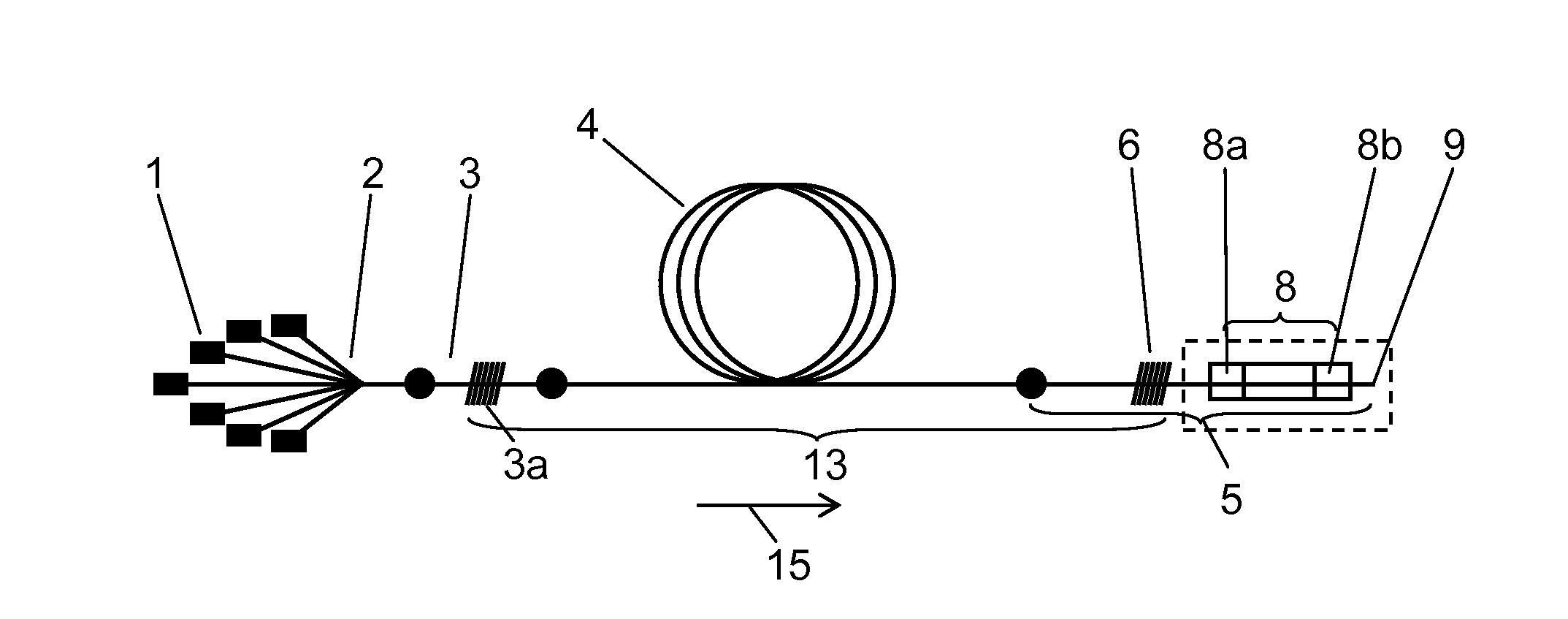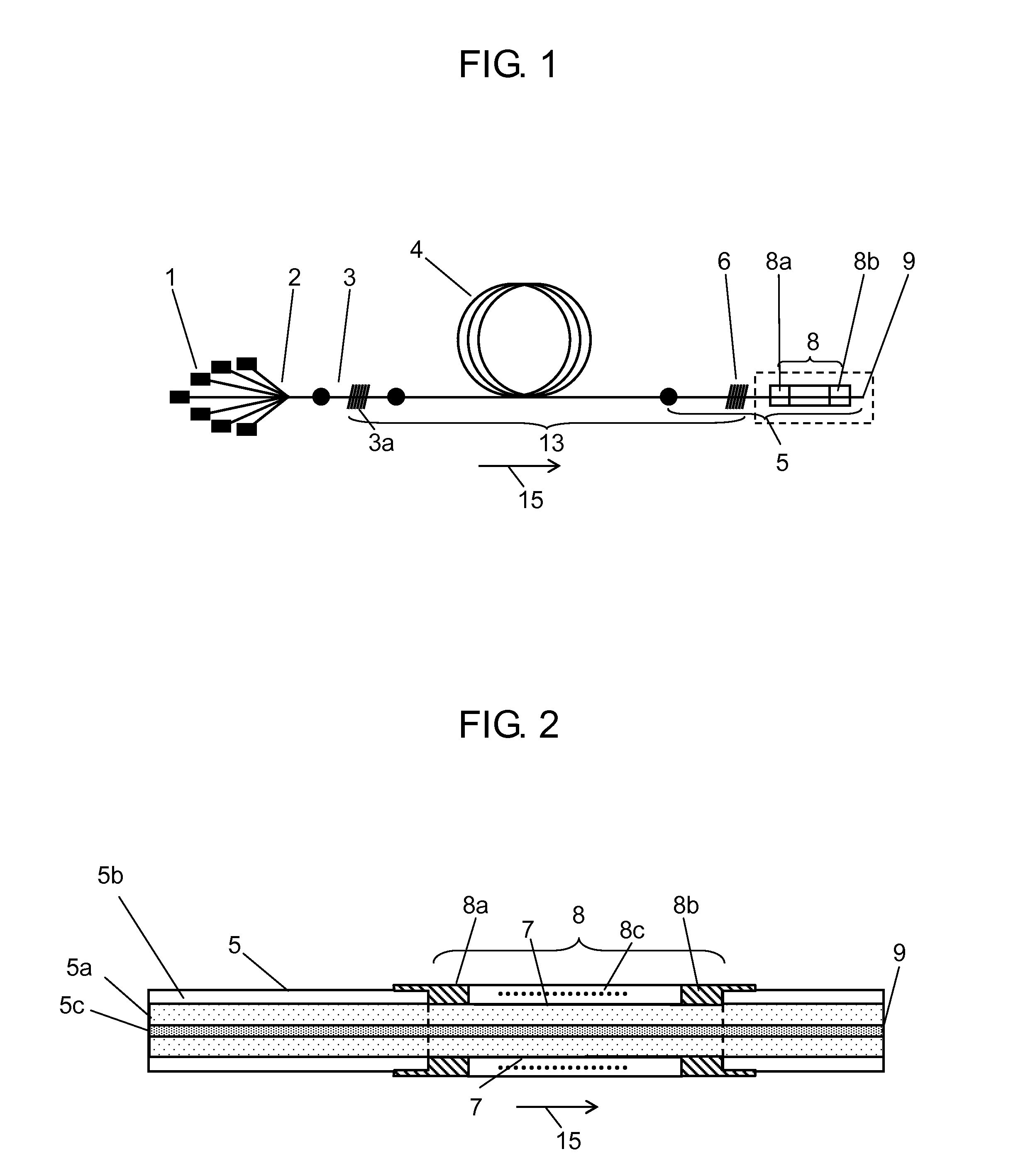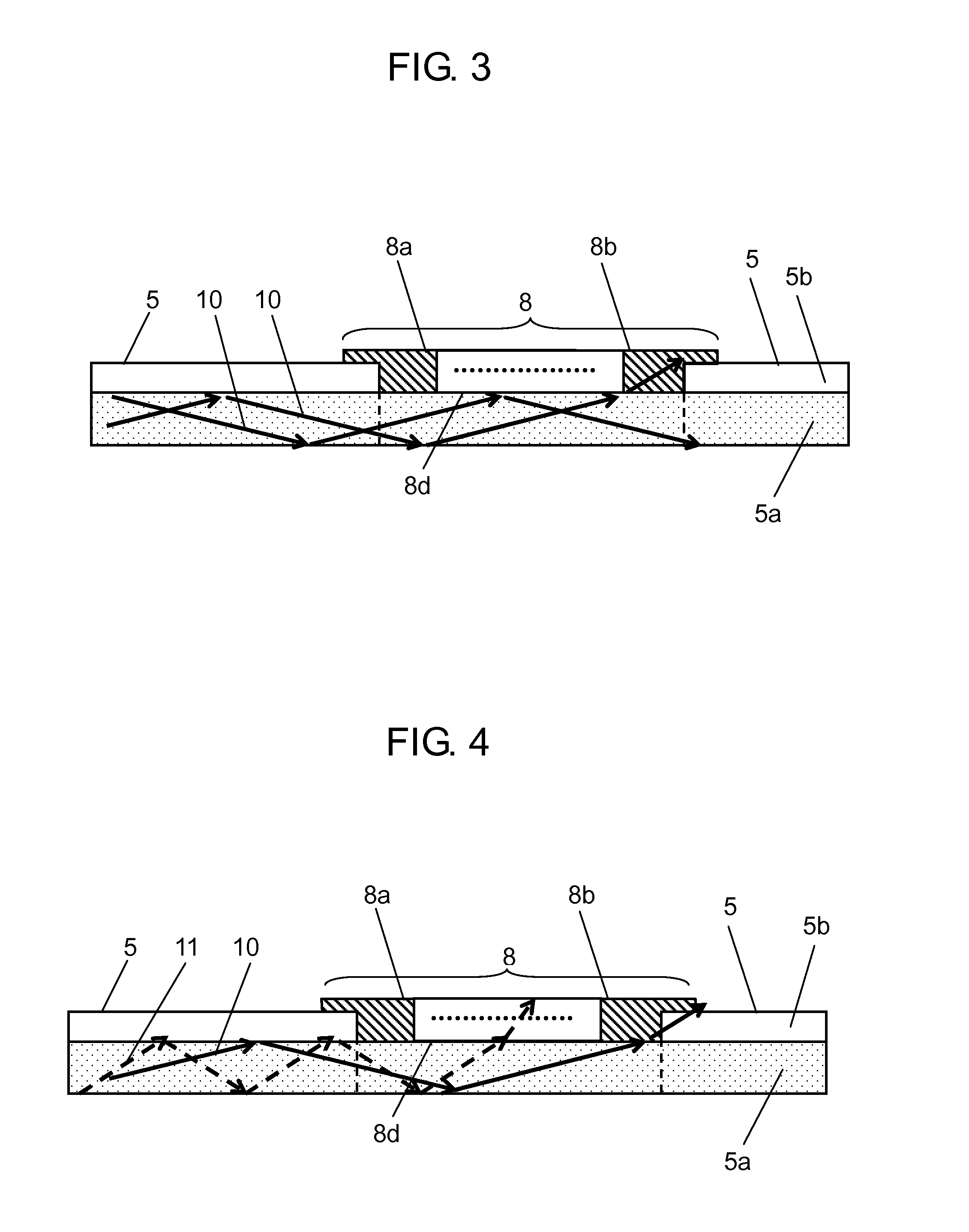Fiber laser
a fiber laser and fiber technology, applied in the field of fiber lasers, can solve the problems of resin damage, resin damage, and above-mentioned conventions, and achieve the effect of improving the reliability of assembled fiber lasers
- Summary
- Abstract
- Description
- Claims
- Application Information
AI Technical Summary
Benefits of technology
Problems solved by technology
Method used
Image
Examples
first exemplary embodiment
[0024]FIG. 1 illustrates the structure (including the high refractive-index resin coat structure), which generally shows from the oscillator to the resin recoated section, of a fiber laser in accordance with the first exemplary embodiment of the present invention. FIG. 2 shows a detailed structure of the high refractive-index resin coat section of the fiber laser in accordance with the first exemplary embodiment of the present invention.
[0025]As shown in FIG. 1 and FIG. 2, the fiber laser of the first exemplary embodiment has laser diode 1 for excitation, excitation light coupler 2, input double-clad fiber 3, oscillation double-clad fiber 4, output double-clad fiber 5, low-reflection FBG (fiber bragg grating) 6, second clad removed section 7, high refractive-index resin coat section 8, and output end 9 for oscillation light. Input double-clad fiber 3 contains a bragg diffraction grating as high-reflection FBG 3a, which is formed in core 5c of the fiber. Oscillation double-clad fiber...
example 1
[0049]Hereinafter, a specific example of the present invention will be described in detail.
[0050]As for laser diode 1, 19 single emitter laser diodes were employed (where, each diode offers 915 nm of center wavelength of output light and standard output of 12 W). A taper bundle fiber coupler in which 19-fiber-bundled quarts fiber (NA=0.15) provides output to a single-line fiber (NA=0.46) was employed for excitation light coupler 2.
[0051]As for oscillation double-clad fiber 4, a double-clad fiber having a single-mode core doped with Ytteribium (Yb) as a rare earth element was employed. Input double-clad fiber 3 having high-reflection FBG 3a therein and output double-clad fiber 5 having low-reflection FBG 6 therein were fusion spliced to each end of oscillation double-clad fiber 4 to form a fiber laser oscillator. In the fiber laser oscillator, FBG 3a and FBG 6 serve as a reflection mirror each other.
[0052]A resin having a refractive index of 1.38 was used for second clad 5b of double...
PUM
 Login to View More
Login to View More Abstract
Description
Claims
Application Information
 Login to View More
Login to View More - R&D
- Intellectual Property
- Life Sciences
- Materials
- Tech Scout
- Unparalleled Data Quality
- Higher Quality Content
- 60% Fewer Hallucinations
Browse by: Latest US Patents, China's latest patents, Technical Efficacy Thesaurus, Application Domain, Technology Topic, Popular Technical Reports.
© 2025 PatSnap. All rights reserved.Legal|Privacy policy|Modern Slavery Act Transparency Statement|Sitemap|About US| Contact US: help@patsnap.com



